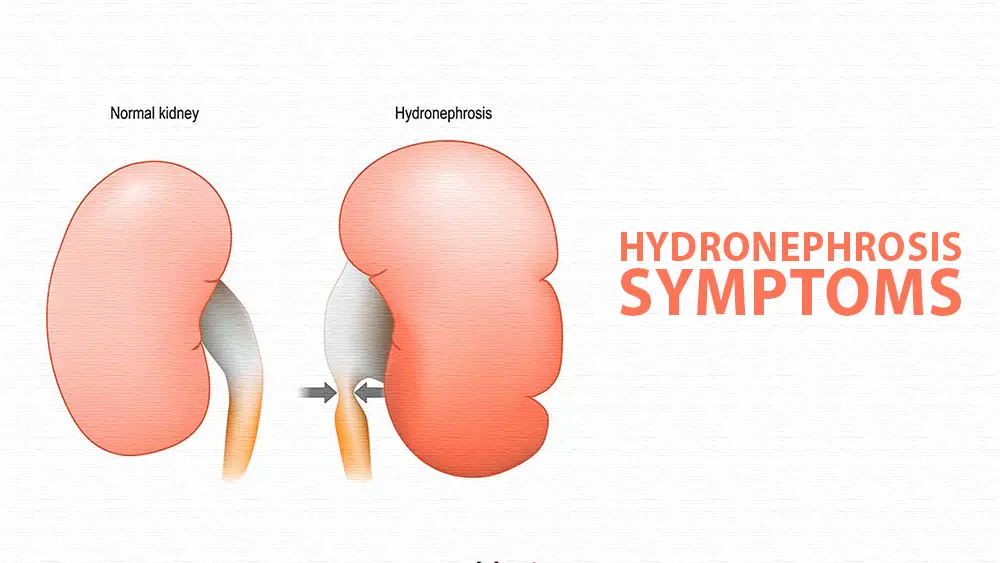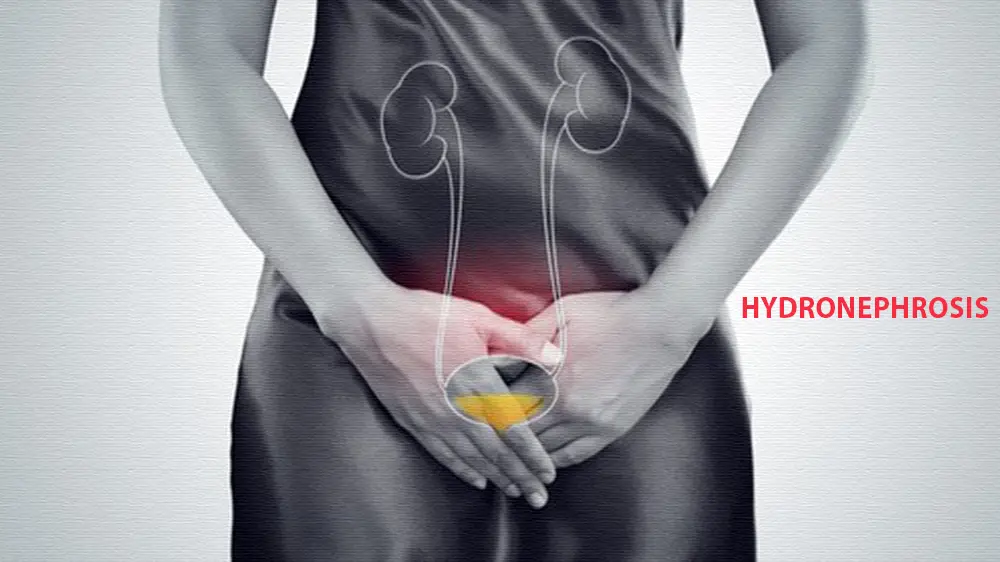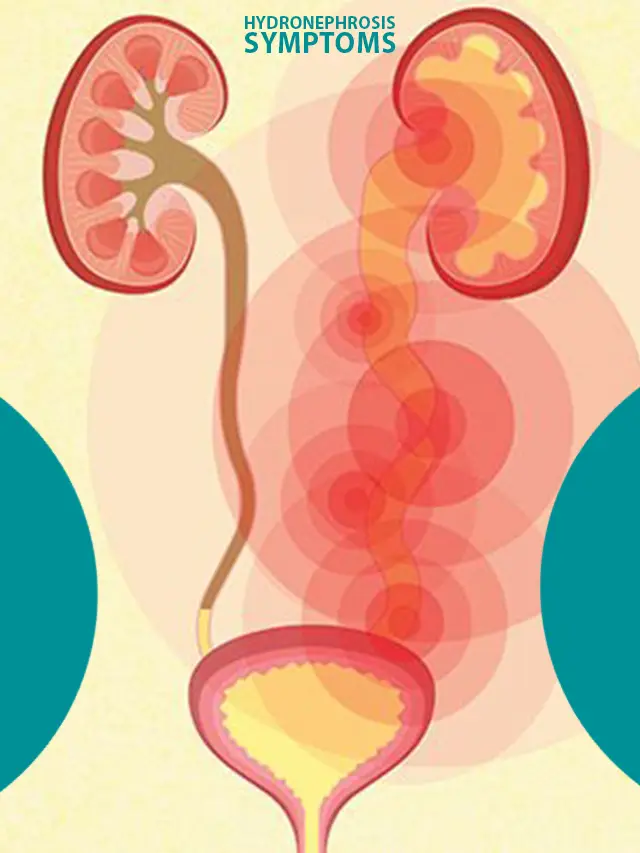
HEALTH BLOG
Hydronephrosis Symptoms And Signs of Kidney Complication
-
 Rahul Priydarss
Rahul Priydarss - February 10, 2024
T
he Hydronephrosis Symptoms can vary depending on the underlying cause and the severity of the condition. Some common symptoms include. Hydronephrosis is a condition characterized by the swelling or enlargement of one or both kidneys due to the backup of urine.

Table of Contents
Introduction:
Hydronephrosis is a condition in which one or both kidneys become swollen due to accumulation of urine. This can happen when there is a blockage in the urinary tract, preventing the normal flow of urine from the kidneys to the bladder. It is important to understand the symptoms of hydronephrosis for timely diagnosis and treatment. In this article, we will explore the various signs and symptoms associated with hydronephrosis, as well as its possible causes and treatment options.
Detailing of Hydronephrosis Symptoms:
Accourding to many clinical study and standers Hydronephrosis Symptoms are many types:
1- Flank Pain: One of the most common symptoms of hydronephrosis is pain in the flank area, which is located on the side of the body between the lower ribs and hip. This pain can be mild or sharp and can vary in intensity. It is often more pronounced on one side of the body and may spread to the back or waist.
2- Abdominal Pain: Hydronephrosis may also cause abdominal pain, especially on the side of the affected kidney. This pain may be constant or intermittent and may worsen with movement or certain activities. In some cases, it may also be accompanied by nausea and vomiting.
3- Frequent Urination: Individuals with hydronephrosis may have an increased urge to urinate, as well as frequent urination. This is due to the pressure exerted by the swollen kidneys on the bladder, which may cause bladder irritation and the need to urinate.
4- Painful Urination: Hydronephrosis can cause discomfort or pain during urination, called dysuria. This may result in inflammation or irritation of the urinary tract due to the accumulation of urine and pressure on the bladder.
5- Blood in Urine: Hematuria, or the presence of blood in the urine, is another common symptom of hydronephrosis. Urine may appear pink, red, or brown, indicating the presence of blood. This can be a worrying symptom and should prompt further evaluation by a healthcare professional that confirms the Hydronephrosis Symptoms.
6- Fever and Chills: In some cases, hydronephrosis may be associated with a urinary tract or kidney infection, known as pyelonephritis. This can cause symptoms such as fever, chills, and general malaise in addition to the typical symptoms of hydronephrosis.
7- Swelling: In severe cases of hydronephrosis, swelling or a bulge may appear in the abdominal or flank area. This may also be accompanied by a feeling of fullness or pressure in the affected area.
Causes of Hydronephrosis:
According to many standards and studies Hydronephrosis can result from various underlying conditions that obstruct the flow of urine from the kidneys. Some common causes include:
1- Kidney Stones: Small, hard deposits of minerals and salts that form in the kidneys can obstruct the urinary tract, causing hydronephrosis.
2- Urinary tract infection (UTI): Infections of the bladder, ureters, or kidneys can cause inflammation and swelling, potentially leading to hydronephrosis if left untreated.
3- Enlarged Prostate: In men, an enlarged prostate gland can compress the urethra and obstruct the flow of urine, causing hydronephrosis.
4- Pregnancy: The growing uterus during pregnancy can put pressure on the ureters, causing hydronephrosis in some women. also, sometimes they cause ovarian cancer.
5- Congenital Anomalies: Structural abnormalities present at birth, such as ureteropelvic junction obstruction or vesicoureteral reflux, can predispose individuals to hydronephrosis.
6- Tumors: Tumors in the urinary tract or nearby organs can obstruct urine flow and cause hydronephrosis.
7- Narrowing of the Ureter: Previous surgery, trauma, or other conditions that cause scarring or narrowing on the ureter can cause hydronephrosis.

Treatment Options When Hydronephrosis Symptoms Appear:
Treatment of hydronephrosis depends on the underlying cause and severity of the condition. In mild cases, conservative measures such as antibiotics for pain management and infection may be sufficient. However, more severe cases may require intervention to reduce the blockage and restore normal urine flow. Treatment options may include:
1- Medications: Pain relievers and anti-inflammatory medicine- Aceclofenac, Diclofenac, and Tramadol, and antibiotics Nitrofuratine, Norfloxacin, and Tinidazole may be prescribed to manage symptoms and treat the underlying infection.
2- Ureteral stent placement: A thin, flexible tube called a stent may be inserted into the ureter to help keep it open and allow urine to flow freely from the kidney to the bladder. and these symptoms mostly shoes in females or girls between the ages of 13 and 20.
3- Surgery: In cases where other interventions are not effective, surgical procedures such as pyeloplasty or nephrectomy may be necessary to remove blockages or repair damaged tissues. and all are done with a surgeon doctor.
4- Lithotripsy: For kidney stones that cause hydronephrosis, lithotripsy may be performed to break the stones into smaller pieces that can be more easily removed.
Observation Of Hydronephrosis Symptoms:
In some cases, especially if hydronephrosis symptoms show mild or asymptomatic, a “wait and see” approach may be adopted with regular monitoring to assess any changes or progression in the condition.
Frequently Asked Questions (FAQs):
A1: Hydronephrosis can occur due to various reasons including kidney stones, urinary tract infections (UTIs), enlarged prostate in men, pregnancy, congenital anomalies, tumors, and scarring or narrowing of the ureter.
A2: Symptoms of hydronephrosis may include flank pain, abdominal pain, frequent urination, painful urination, blood in urine, fever, and chills (if associated with infection), and visible swelling or bulging in the abdominal or flank area.
A3: Diagnosis of hydronephrosis typically involves a combination of medical history review, physical examination, imaging tests such as ultrasound, CT scan, or MRI, and urine tests to check for signs of infection or blood in the urine.
A4: Treatment for hydronephrosis depends on the underlying cause and severity of the condition. Options may include medications (such as pain relievers, antibiotics, or anti-inflammatory drugs).
A4: While some cases of hydronephrosis may not be preventable, there are measures individuals can take to reduce their risk. This includes staying hydrated, and maintaining a healthy diet low in salt and processed foods to prevent kidney stones.

-Please remember, always consult with healthcare professionals or Doctors for personalised advice related to medical conditions.
Conclusion:
Hydronephrosis Symptoms show a condition that requires immediate medical attention to prevent complications and preserve kidney function. Recognizing the symptoms of hydronephrosis, such as abdominal pain, urinary symptoms, and swelling, is essential for prompt diagnosis and treatment. By understanding the underlying causes and available treatment options, individuals can work with their healthcare providers to effectively manage the condition and maintain optimal kidney health. If you experience any symptoms indicating hydronephrosis, it is important to seek medical evaluation immediately for proper diagnosis and management.




